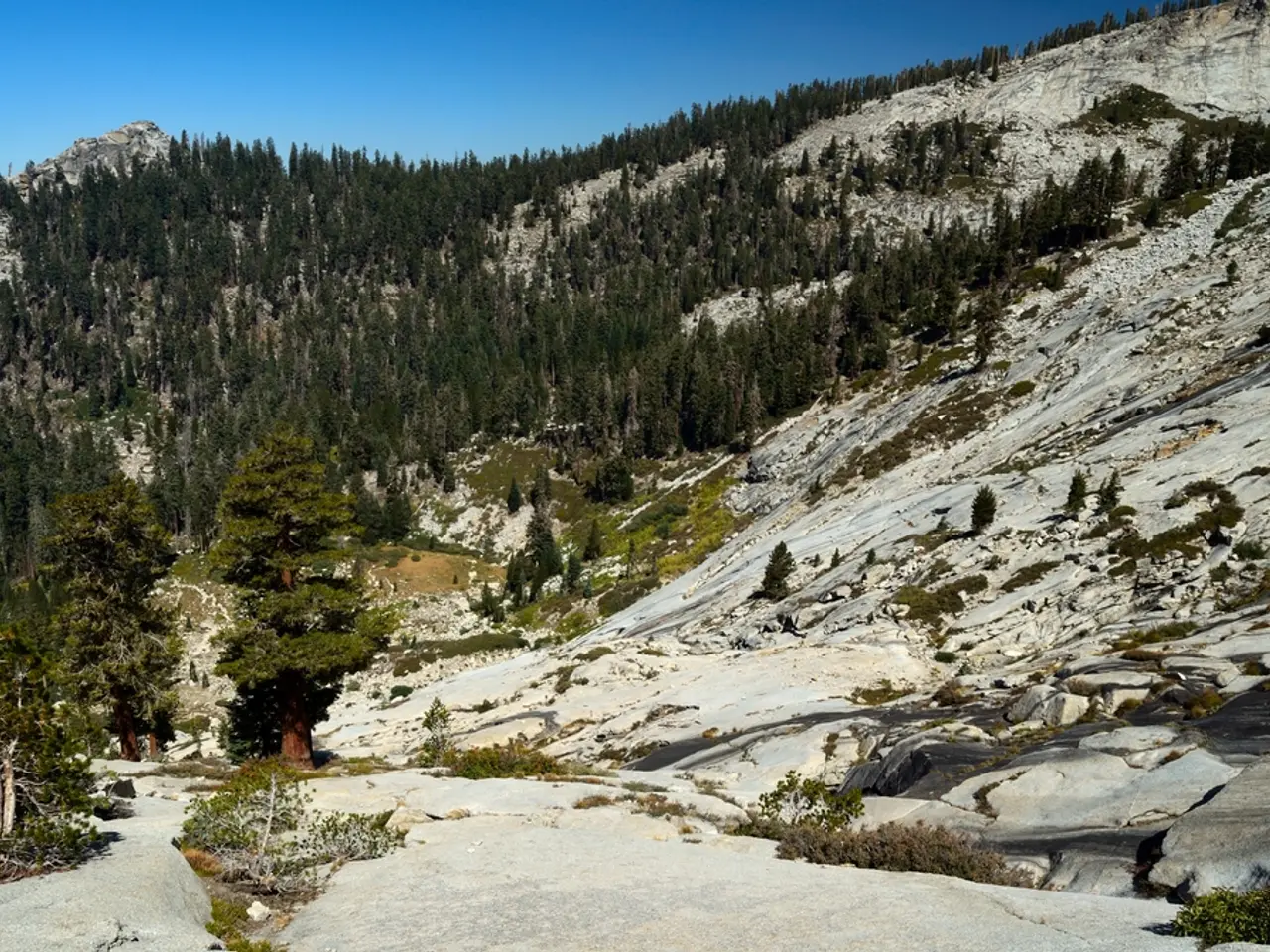Ascending and Conquering the Five Peakiest Mountains in the Adjacent United States
For the adventurous spirit seeking a challenge, hiking the five tallest mountains in the contiguous United States offers an unparalleled experience. Here's a breakdown of key preparation steps, trail specifics, permit requirements, safety concerns, and required skills for each mountain:
1. Mount Whitney (14,505 feet) - Trail Specifics: The standard Mount Whitney Trail starts at Whitney Portal (8,300 feet) and is a 22-mile round trip with a 6,200-foot elevation gain. It involves 99 switchbacks at Trail Crest, which can be challenging. - Permits: Obtain through a competitive lottery system on recreation.gov in February. Only about 28% of applicants secure permits. - Safety Concerns: Altitude sickness is a significant risk. Acclimatize at 8,000 feet or higher before the summit. - Required Skills: High fitness level, mental stamina, and basic hiking skills. In the off-season, additional skills for ice and snow are necessary.
2. Mount Elbert (14,438 feet) - Trail Specifics: The Northeast Ridge Trail is a popular route, about 10 miles round trip with significant elevation gain. No technical skills are required during summer, but early starts are recommended. - Permits: No permits are required, but parking can be challenging. - Safety Concerns: Weather conditions can change quickly, and altitude sickness is a concern. - Required Skills: Good physical condition, basic hiking skills, and awareness of potential weather changes.
3. Mount Massive (14,427 feet) - Trail Specifics: The East Slopes route is about 13.5 miles round trip with an elevation gain of around 4,500 feet. The trail is generally non-technical but can be challenging due to its length and elevation gain. - Permits: No permits are required, but parking and trail congestion can be issues. - Safety Concerns: Altitude sickness and potential thunderstorms are concerns. - Required Skills: Good physical fitness, basic hiking skills, and awareness of weather conditions.
4. Mount Harvard (14,420 feet) - Trail Specifics: The standard route is about 14 miles round trip from the North Cottonwood Creek Trailhead. It involves substantial elevation gain and some scrambling at higher elevations. The trail is often less crowded than other 14ers but still requires significant physical effort. - Permits: No permits are required, but parking areas can fill quickly. - Safety Concerns: Altitude sickness, weather changes, and potential steep terrain at higher elevations. - Required Skills: Good physical condition, basic hiking skills, and some scrambling ability.
5. Mount Rainier (14,411 feet) - Trail Specifics: The Disappointment Cleaver route is one of the most popular but requires technical skills such as glacier travel and crevasse rescue. The climb is about 35-40 miles round trip with significant elevation gain and technical challenges. - Permits: Climbing permits are required and can be obtained through Mount Rainier National Park. - Safety Concerns: Glacial travel risks, crevasses, and severe weather conditions. - Required Skills: Advanced mountaineering skills, glacier travel experience, and physical stamina.
### General Preparation Steps: 1. **Physical Conditioning:** Engage in regular cardio and strength training to build endurance and stamina. 2. **Altitude Acclimatization:** Spend time at higher elevations before attempting the summit to minimize altitude sickness risks. 3. **Weather Awareness:** Monitor weather forecasts closely and be prepared for sudden changes. 4. **Gear and Equipment:** Ensure you have appropriate gear for the conditions, including crampons and ice axes for snowy conditions. 5. **Permit Applications:** Plan ahead and apply for necessary permits in advance, especially for Mount Whitney and Mount Rainier.
These preparation steps and specific trail information are crucial for a safe and successful experience on these challenging mountains. Happy hiking!
If you're planning a trip that combines travel guides for hiking the tallest mountains in the contiguous United States with an interest in sports, you might find helpful resources about the physical conditioning, gear requirements, and tunnel vision necessary for conquering these peaks. For instance, Mount Whitney calls for a high fitness level, while Mount Rainier demands advanced mountaineering skills and glacier travel experience.






